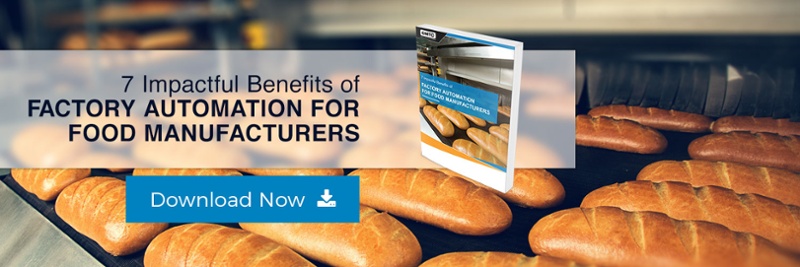December 12, 2017 | Food and Beverage
An Integrated Approach for Growers, Food Manufacturers in Northern California

California is a leader in U.S. domestic agriculture. According to the 2015-2016 California Agricultural Statistics Review, the state bested Iowa, Texas, Nebraska, and Minnesota in crop cash receipts.
California farmers and ranchers received more than an estimated $45 billion for more than 400 commodities in 2016. With a majority of the nation's vegetables, fruits, and nuts coming from California, agriculture is important to both the state and the overall U.S. economy. California also has the highest number of food manufacturing plants, according to the U.S. Department of Agriculture’s (USDA) Economic Research Service.
However, food growing is just a part of the total food production process; food manufacturing is another part of the picture. An integrated approach for food growers and food manufacturers can help create a sustainable and unbroken food supply chain.
Successful food manufacturing is founded on a strong working relationship between food growers and manufacturers. These partnerships are essential in moving the agricultural and food manufacturing sectors forward through collaborative and supportive interactions. This integrated strategy also requires the regulative collaboration of government with growers and food manufacturers on shared operational values at different stages in the food supply chain.
Consumer practices and engagement also are changing. California continues to lead the nation with $2.9 billion in certified organic sales in 2016, according to a September 2017 press release from the USDA. Additionally, in 2016, 350,000 Californians signed a petition to stop the use of oil drilling wastewater in food crop watering.
We will address four areas of the food value chain in which growers and food manufacturers can collaborate to sustain continuous food production:
1) Research and Development (R&D)
Research helps improve agricultural productivity and resilience to meet the growing demand for food, mitigate risks, and maintain market competitiveness. Since R&D is expensive and time-consuming, it necessitates the collaborative effort of farmers, food manufacturers, and governments to transform key farming techniques and food processing methods.
Research areas should focus on integrating advances in agronomy, soil fertility, water management, mechanized methods, livestock, pest control, and other agricultural technologies.
2) Training
Successful food manufacturing is dependent on a successful agricultural sector, which includesspecialized skills and expertise in growing healthy and sustainable crops. The development and transfer of knowledge and skills through effective training programs in both the agricultural and manufacturing sectors are essential for sustainable food manufacturing.
One example is the use of a “Train the Trainer” model, which creates opportunities that build on transferring knowledge and skills from trained individuals through workshops and other training initiatives. Experiential learning can be explored to create awareness of the necessary knowledge and skills in all aspects of food growing and food manufacturing.
Additionally, it is important for manufacturers to continuously train for Hazard Analysis and Critical Control Points (HAACP), which aims to reduce the risks of safety hazards in food and raw material production, procurement and handling.
3) Storage
The storage of harvested farm produce and animal food products is an important commercial activity to sustain the continuity of the food supply chain. Efficient and effective storage helps preserve farm produce while waiting for food manufacturers, processors, and consumers to buy them. They come as either surface or underground structures that are cool and dry, cool and moist, warm and dry, or refrigerated.
These storage facilities can vary depending on weather conditions and the type of crop that needs to be stored, such as grains, vegetables, spices and herbs, meat, poultry, and dairy products.
4) Marketing and Distribution
Marketing and distribution are important components of the food value chain. Food hubs are an important subset of the chain, especially for farmers and ranchers with small- or medium-sized operations who lack the capacity to put up their own service markets for their produce. Food hubs allow them to gain entry into large-volume markets through a combination of aggregation and distribution of their crops.
Farm and dairy products need to be distributed to food processors and retailers, such as grocery stores, restaurants, and food camps. Distribution needs transportation systems that are reliable in terms of speed and safety of delivery, so that crops (especially perishables) are preserved until they reach their destinations.
While exclusive partnerships between growers and food manufacturing companies are not always possible, food manufacturers can collaborate with farmer organizations to discover innovative ways of producing raw food materials for more sustainable food production.

